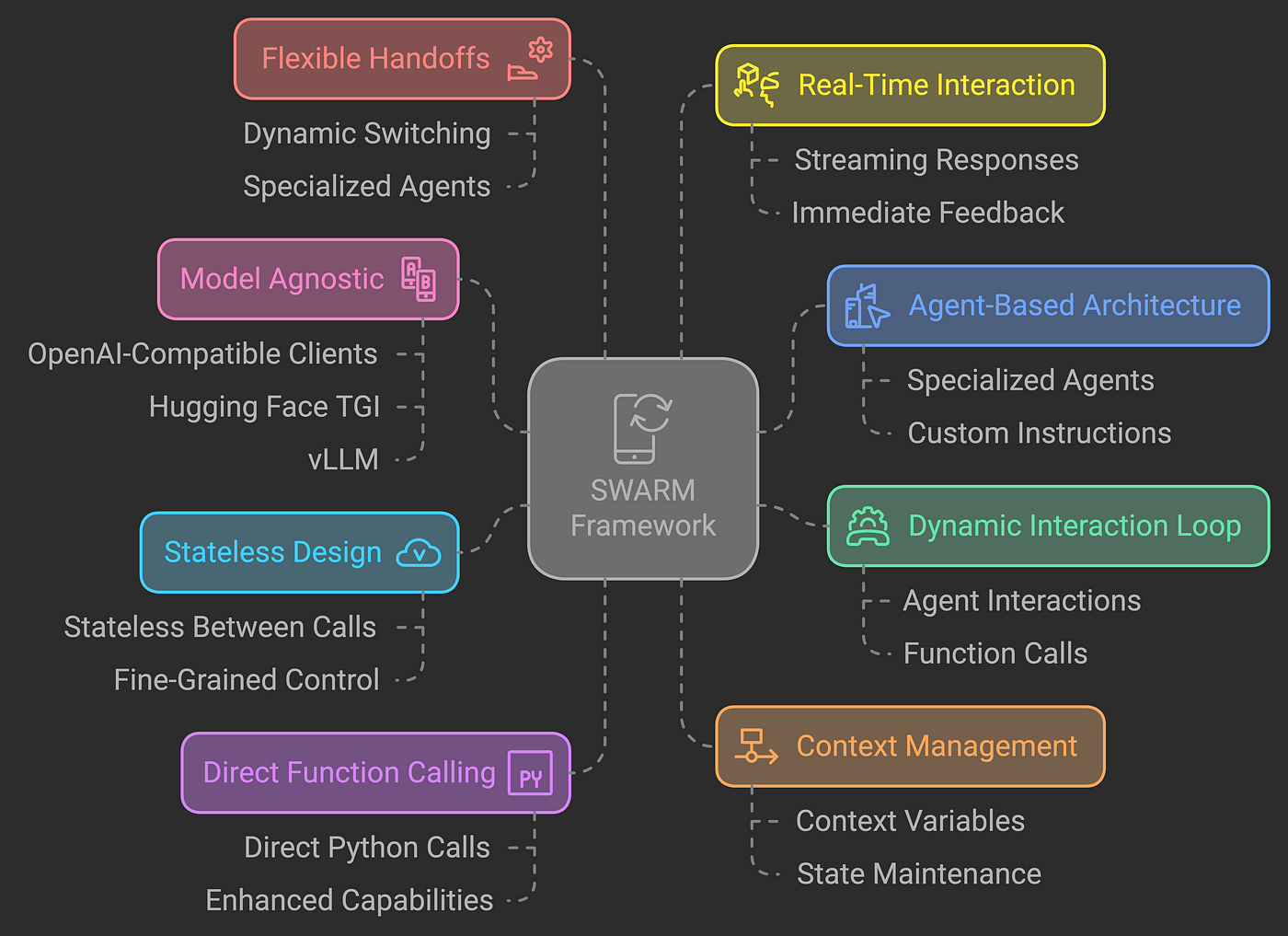OpenAI Swarm: A Hands-On Guide to Multi-Agent Systems
OpenAI Swarm, launched in 2024, serves as an experimental framework that simplifies the orchestration of multi-agent systems for developers. It aims to streamline the coordination of AI agents through scalable and user-friendly mechanisms, making it easier to manage interactions within complex workflows. As an open-source project available on GitHub, Swarm offers developers the opportunity to explore its features, experiment with its functionality, and contribute to its ongoing development. For machine learning professionals, it provides a powerful yet accessible tool to build and scale agent-based systems without the need for advanced orchestration skills. 
Managing AI Agents with OpenAI Swarm
OpenAI Swarm is a tool that helps manage multiple AI agents working together. It makes it easy to control and customize how these agents communicate and work on tasks. Think of it like a team of robots that can pass work between each other to get things done. Swarm is especially helpful when you need different agents to handle different parts of a task, or when the environment changes and agents need to make decisions based on that. It’s like having a team that can quickly adapt to solve problems.
Key Features of OpenAI Swarm
Agents in OpenAI Swarm have structured roles and responsibilities. Each agent receives a specific “Task” object that outlines the type of work it can perform, providing clarity and specificity in agent functions. Swarm allows for more flexible agent behavior without imposing strict task limits. Agents can act independently and do not require a centralized manager as required in some systems, promoting a decentralized approach to task execution. 
OpenAI Swarm maintains persistent context by storing information through context_variables across agent interactions, enabling seamless collaboration among agents. Additionally, it provides functions with docstrings for general purposes and function annotations for customization of agent capabilities.
Enhancing Multi-Agent Systems with OpenAI Swarm
OpenAI Swarm is designed to be user-friendly, making it perfect for beginners in multi-agent AI, as it doesn’t require complicated setups. It ensures efficiency by delegating tasks to specialized agents and adapting to dynamic scenarios, making it a versatile solution for streamlining multi-agent interactions.
Swarm facilitates smooth transitions between agents through handoff functions guided by conversational flow or predefined rules. Context variables play a key role in maintaining and updating shared information, ensuring all agents work with accurate and consistent data.
Potential Use Cases of OpenAI Swarm
Some potential use cases of OpenAI Swarm could include virtual customer support, smart personal assistants, real-time data workflows, and enhanced retail experiences. Its versatility and adaptability make it an invaluable tool for dynamic environments requiring flexible and intelligent task management.

Conclusion
In conclusion, OpenAI Swarm provides a robust framework for managing and coordinating multiple AI agents effectively. Its ability to assign specific roles, utilize JSON-based task structures, and enable seamless task handoffs ensures efficiency in handling complex workflows. The use of context variables further enhances collaboration by maintaining consistency and continuity among agents. Swarm’s adaptability makes it an invaluable tool for dynamic environments requiring flexible and intelligent task management.




















